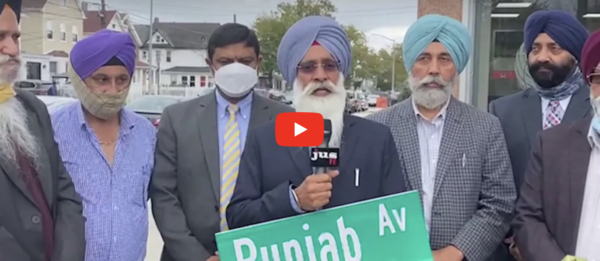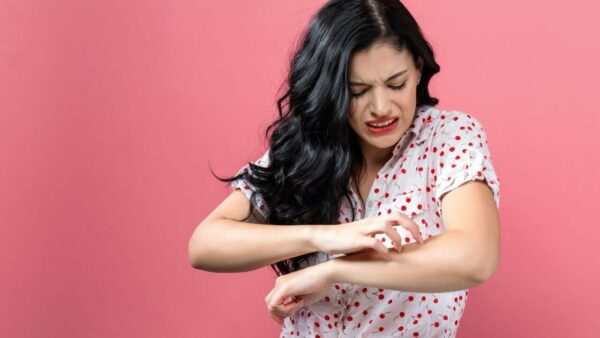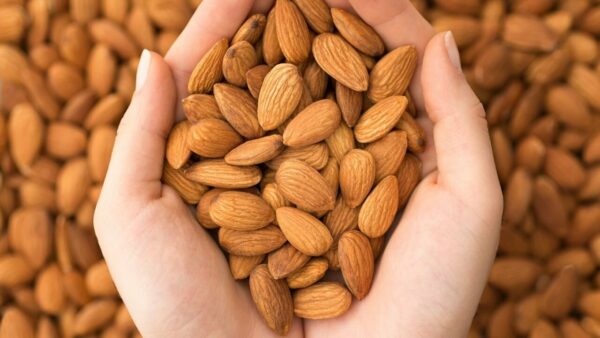The covid-19 pandemic has brought a significant change in our lives and has added many new terms to our everyday vocabulary. To stay protected and reduce the risk of covid-19 infection and its complications, it is imperative to update ourselves with every piece of information related to coronavirus infection. In addition, it is essential to understand the meaning of the new terms used by the experts to provide us information regarding Covid-19.
Here we are with a Covid glossary and new unknown terms. Use this dictionary and get familiar with the words that will help you understand coronavirus outbreaks.
Covid Glossary And New Unknown Term
1. Antibody
In response to and fight an infection, our Immune system make a protein known as an antibody. Antibodies are unique to the specific pathogen (disease-causing microorganism or infectious agent). The presence of antibodies against coronavirus in the blood confirms that the person was exposed to coronavirus at some point, and the body mounted an immune response to fight the pathogen.
2. Antibody test
A serology test to check the presence of antibodies in your blood that confirms you were infected with the virus.
3. Antigen
Antigen is a protein substance causing our immune system to produce antibodies.
4. Antigen test
A diagnostic test to check if you are currently infected. The antigen test procedure involves taking the sample from your throat or nose and check the sample for the Pantibody Testresence of antigen. It is also called The Rapid Diagnostic test for Rapid test.
5. Asymptomatic
You may be infected by coronavirus but may not show any sign or symptom of disease or illness. Even if asymptomatic, the infected person can spread coronavirus infection to others and are contagious.
6. Aerosol
Aerosols are tiny droplets of particles suspended in the air. According to WHO, coronavirus can be transmitted via aerosol if in close contact with the infected person.
7. Active immunity
Immunity generated on exposure to any disease-causing organism. When a person is exposed to coronavirus, the body produces antibodies to fight against the disease. Active immunity generated is long-lasting. In case of coronavirus infection, not much is known about how long the natural immunity last. According to studies, the active immunity in covid-19 lasts for 6 to 8 month.
8. Antibody cocktail
An antibody therapy specifically designed to block the infectivity of SARS-CoV-2 virus. It is a cocktail of two monoclonal antibodies – Casirivimab-Imdevimab injection. Casirivimab-Imdevimab blocks the attachment and entry of coronavirus into human cells. The therapy is suited to high-risk covid patients who are within the first ten days of symptom onset. The patients should meet other criteria such as:
- Age 65 years or above
- Obese with a body mass index of more than 35
- Have diabetes, chronic kidney or liver disease.
- Patients on dialysis
- Individuals 55 years or above and have hypertension, heart disease, or chronic lung disease.
- Those receiving immunosuppressive treatment currently.
Antibody cocktail therapy is meant for high-risk patients suffering from comorbidities, are under home isolation, and do not need oxygen support.
9. Acute respiratory distress
Acute respiratory distress syndrome happens when the fluid build-up in alveoli (the tiny air sacs in lungs) keep the lungs from filling up with air. The level of blood decreases, and organs are deprived of oxygen. The main symptom of acute respiratory distress syndrome is shortness of breath. It is usually fatal.
10. Black fungus
The black fungus is a rare infection caused by exposure to black fungus spores commonly found in soil and decaying organic matter. It primarily affects people who have a weak immune system, are on high doses of steroids, or going through cancer treatment. When a person with a weakened immune system inhales the fungal spores from the air, infection sets in and may spread to the lungs and brain. The warning signs of black fungus include redness and pain around the nose or eyes, headache, cough, bloody vomit, shortness of breath, and altered mental state. If treatment is delayed, it may be life-threatening.
11. Coronavirus
A type of virus that looks like crown when viewed under a microscope. There are many coronavirus strains that mostly cause mild respiratory infection, but others can also cause serious illness. The coronavirus strain that is causing Covid-19 pandemic is SARS – Co – 2.
12. Covid-19
Covid-19 is the name given to the disease caused by the novel coronavirus (SARS-CoV-2).
13. Contagious
Infected object or person capable of transmitting or spreading infection through close contact.
14. Communicable
Diseases that spread from one person to another
15. Community spread
When the disease spreads within a specific location, such as a town or city. As a significant number of people are infected, the clear source of infection or contact is not known.
16. Congregate setting
Public places such as theatres, malls, and grocery stores that are crowded and where there is chance of getting exposed with infected person.
17. Containment
Actions taken to limit the infection within and break the chain of transmission.
18. Confirmed cases
People tested and confirmed to have coronavirus infection.
19. Contact tracing
A measure taken to control a communicable disease. Public Health workers work with covid-19 infected people to identify the direct contacts. Close contacts with the infected person while they were contagious are informed and advised to stay at home for 14 days and monitor symptoms.
20. Covid pneumonia
Covid pneumonia is a complication of Covid-19 infection. It is inflammation of the air sacs in the lungs causing the air sacs to fill with pus or fluid. It may cause low blood oxygen levels and malfunction in severe cases.
21. Cytokine storm
Cytokines are glycoproteins that aid inflammatory and immune responses in the human body. However, if too much cytokines is released, it is termed as cytokine storm that can turn fatal as the body immune system gets overactive and starts attacking its cells and tissues rather than fighting the virus. According to experts, the intensity of the cytokine storm initiated by COVID is quite strong.
22. Case fatality rate
It is the risk of mortality from any disease. It is calculated by dividing the number of deaths caused by the disease by the number of disease cases in a specific period.
23. Covid toes
Purple or red bumps that may appear on toes of patients suffering from Covid-19. The bumps appeared on toes, or even hands are itchy, burning, and painful.
24. Comorbidity
Presence of additional medical conditions such as diabetes, cardiac disease, chronic liver or kidney disease, and hypertension. Individuals with comorbidity, when exposed to coronavirus infection, are at the risk of developing more severe infection.
25. Covaxin
India’s first indigenous covid-19 vaccine by Bharat Biotech developed in collaboration with the Indian Council of Medical Research. It is produced by using Whole-Virion Inactivated Vero Cell-derived technology. The inactivated viruses are incapable of infecting but can generate the immune response to mount a defensive reaction against coronavirus infection.
26. Covishield
Covishield vaccine is developed by Oxford – Astrazeneca and manufactured by the Serum Institute of India. It is prepared using viral vector platform. A part of the SARS-CoV-2, particularly the spike protein, is added to the modified version of a chimpanzee adenovirus. The Chimpanzee adenovirus is weekend and harmless adenovirus that causes common cold in the chimpanzee. Chimpanzee adenovirus acts as a vehicle and transports the spike proteins into the human cell to trigger the immune response without causing disease.
27. Epidemic
Widespread occurrence of any infectious disease in a community at a specific time. The black fungus disease is declared epidemic in many states of India, such as Delhi, Rajasthan, Tamil Nadu, Odisha, Gujarat, and Telangana.
28. Flattening of curve
It refers to the efforts designed in order to prevent too many people from getting sick around same duration. It is a public health strategy to slow down the spread of coronavirus infection during the covid-19 pandemic. It is visual representation of number of infected people needing health care over time.
29. Herd immunity
When majority of population in an area becomes immune to a particular infection. The members of the population are protected by being around them. To reach herd immunity against Covid-19, anywhere from 50 % to 90% of the population need to have antibodies against covid-19.
30. Hydroxychloroquine
It is medicine to treat and prevent malaria. FDA granted the approval of emergency use of hydroxychloroquine in patients with covid-19. However, it was ruled out later as studies showed that the drug do not work against Covid-19, and the benefits of administrating hydroxychloroquine in Covid-19 patients out weights the risk.
31. Hypoxia
A condition where the body or body organs are deprived of adequate oxygen supply required to carry out essential functions. It is dangerous and might damage organs in few minutes after the symptoms start. Symptoms of hypoxia includes shortness of breath, rapid breathing, slow or fast heart rate, sweating, wheezing, cough, confusion, and changes in skin colour.
32. Incubation period
It is the period between the exposure to an infectious disease to when you get the symptoms. The incubation period of Covid-19 infection is usually 4 to 5 days, but me be as long as 14 days.
33. Isolation
Isolation is staying away from other people. Confirmed Covid-19 cases must stay in isolation away from others until the test negative.
34. Immunocompromised
People with weakened immune systems are called immunocompromised. Such patients are either on immunosuppressive drugs or have other medical conditions such as cancer or had an organ transplant that make it tough for their immune system to fight off the infection.
35. Intubation
In people with severe covid-19 who are on ventilator, a flexible plastic breathing tube is inserted into the large airways that leads to lungs. The tube is connected to ventilator that moves air to and from the lungs.
36. Inactivated Covid vaccines
Inactivated vaccine use disease-carrying virus 0r similar to it, is inactivated with heat, radiation and then injected to stimulate immune system. They cannot cause disease and are safe. COVAXIN is an inactivated Covid-19 vaccine.
37. Live attenuated vaccine
live attenuated vaccine uses live but weekend version of disease-causing virus. It is weak enough to the extent that it is incapable of causing disease but is capable to initiate immune response.
38. MRNA vaccine
MRNA or messenger-RNA vaccines use specific part of infectious agents such as its sugar, protein or coating to produce immune response. Covid-19 vaccines produced by Moderna and pfizer-BioNTech are based on mRNA vaccine technology.
40. N95 respirator
Unlike cloth or surgical mask N95 respirator also known as N95 mask at designed to prevent breathing tiny particles. Fit N95 respirator mask properly to filter out 95% of small and large particles and prevent contracting coronavirus infection.
41. Nasal Aspergillosis
The cases nasal aspergillosis just like white, black and yellow fungus has been reported in COVID-19 recovered patients. The cause of aspergillosis is attributed to overuse of steroids and use of non-sterile water that is used for hydrating the oxygen supplies.
42. Mutation
Change in genetic sequence or genome of the virus while it is multiplying results in a new strain. Some new strain die out where as effective ones survive and spread efficiently.
43. Mortality rate
Mortality means death. Mortality rate measures the number of people dying in a defined population in a specific period of time.
44. Morbidity rate
Morbidity means illness. Morbidity rate is mathematical calculation that measures illness in a defined population in specific time period.
45. Oxygen saturation level
The level of oxygen in the blood is known as oxygen saturation level. Pulse oximeter is used to measure the oxygen saturation level. The normal oxygen saturation level in pulse oximeter ranges from 95% to 100%. If the blood oxygen level is below 90%, it is considered low.
46. Oxygen concentrator
An oxygen concentrator is a device that takes ambient air and filters oxygen from nitrogen.
47. Oxygen cylinder
Medical oxygen cylinders contain purity oxygen and is used for medical treatment. To prevent contamination, no other gas is allowed in other cylinder.
48. Passive immunity
Passive immunity is giving up antibodies against specific disease rather than producing them in their own system. Plasma therapy acts as passive immunity. The blood plasma of people who have recovered from Corona infection but contain antibodies against Covid-19 is given to critically ill Covid-19 patients to initiate immune response in them.
49. Placebo
Placebo is inert vaccine or inactive drug given to some of the trial patients to compare the effect of the real drug with inactive substance.
50. Plasma therapy
It is the treatment that involves taking blood from people who were infected by coronavirus but are now covid-19 negative but have developed antibodies to coronavirus. The plasma (clear liquid part of the blood) with antibodies against coronavirus is separated from the received blood and then given to patients with moderate to severe Covid-19 infection. Although plasma therapy has been administered in many cases of covid-19, this treatment is still under experimentation.
51. Pulse oximeter
It is a device that measures oxygen saturation level.
52. Proning
Proning is a process of placing the patient in a position that they are lying on their stomach. Proning is medically accepted Position to improve oxygenation and breathing comfort.
53. Pandemic
Pandemic is global epidemic. It is defined as infectious disease that has spread across multiple continents or worldwide, affecting substantial number of population. Covid-19 has been declared pandemic.
54. Quarantine
It is the word used to keep those who might have been exposed to coronavirus away from others to prevent the spread of disease. Those who have been exposed to Covid-19 infected person or have recently travelled to other regions or country with widespread transmission are advised to stay quarantine for 14 days at least.
55. RT-PCR Test
It is COVID-19 real-time reverse transcription-polymerase chain reaction test. The nasal and throat specimens of the suspected person with covid-19 is collected under the observation of Health Care professional and is analysed. If the test analyses the genetic sequence of SAR-CoV-2, the test is positive. The result is negative if the sample analyse do not contain virus or is not administered properly.
56. PPE kit
PPE or personal protective equipment is worn by the healthcare workers to reduce the exposure to coronavirus. It includes a gown that covers their clothes, clean gloves, N95 masks, goggles and a disposable face shield.
57. Remdesivir
It is antiviral drug that was made to treat Ebola and have been approved by FDA to treat coronavirus infection. Studies show that Covid-19 patients treated with Remdesivir recovered in about 11 to 15 days than those treated with Placebo.
60. Symptomatic
Covid positive patients who are showing the symptoms of coronavirus infection such as fever, chills, dry cough, muscle pain, lethargy, loss of sense of taste and smell, sore throat, chest pain and difficulty in breathing.
61. Social distancing or physical distancing
It is a measure that includes increasing the physical space between two person to prevent the spread of an infectious disease. To prevent covid-19 exposure, it is recommended to maintain at least 6 feet distance from another person.
62. Strain
It is defined as particular version of an organism.
63. Spike protein
The outer layer of virus are called spike protein. In layman language you can say that spike proteins are like key that unlocks human cell receptors and allows the coronavirus to enter and infect the cell.
64. Vaccine
Medicine that prevents the disease by training the immune system to fight a pathogen it has never encountered before.
65. Virus
Infectious microorganism made up of DNA or RNA (genetic material) and wrapped in protein coat. Virus invades living cells, multiplies inside and take control of them.
66. Viral vector vaccine
It uses safe virus to deliver proteins or specific parts of the virus to trigger immune response. It is genetically modified vaccines and is safe. Covishield is viral vector vaccine.
67. Virulent
Infectious disease that spread and affect people quickly.
68. Virulence
Capability of a micro-organism to cause damage to the host.
69. Vaccine efficacy
It is percentage reduction in the disease incidence among population who got vaccinated in clinical trial in comparison to those who didn’t.
70. Variant
A term used to define alteration or change in the original. In case of coronavirus, the term variant is used to describe coronavirus mutant in which the original virus has developed new characteristics.
71. Virus load
It refers to amount of virus you are exposed to. Person exposed to relatively small amount of coronavirus may not develop any symptoms but someone exposed to large amount may develop severe symptoms.
72. Viral shedding
When an infected person release the virus into the atmosphere or environment where the virus can affect others it is termed as viral shedding. In Covid-19 viral shedding mostly occurs through respiratory tract via sneeze or cough. However, in covid-19 viral shedding may also occur through gastrointestinal tract and show up in stool.
73. Ventilator
Machine used to pump oxygen into the lungs if not working properly on its own.
74. White fungus infection
Not much is known about white fungus infection. It is known as Aspergillus Flavus infection. White fungus infection sets in immunocompromised patients coming in contact with things that contain spores such as hay, water and dust particles. The symptoms of white fungus infection is similar to the symptoms of coronavirus infection. The symptoms include cough, reduced oxygen, fever, diarrhoea and whitening of tongue.
75. Walk test
Patients with mild and moderate coronavirus infection are advised to take a walk test to check the severity of disease. Ask the patient to sit for 6 minutes and note the oxygen saturation. Now ask the patient to walk for 6 minutes and then oxygen saturation level. If the oxygen drops for 3 percent after 6 minutes’ walk, the patient needs oxygen support and hospitalization.
76. Yellow fungus infection
Yellow fungus infection in humans is fatal as it grows internally. In humans, it is caused due to unhygienic conditions, consumption of unhygienic food, and high humidity. The symptoms of yellow fungus include pus leakage, slow healing of wounds, malnutrition, lack of appetite, internal bleeding, weight loss, extreme lethargy, organ failure, and, in worse cases, necrosis.
We have covered all the new unknown terms in the Covid glossary used by the experts and health care providers. Hope this will help you stay updated.







